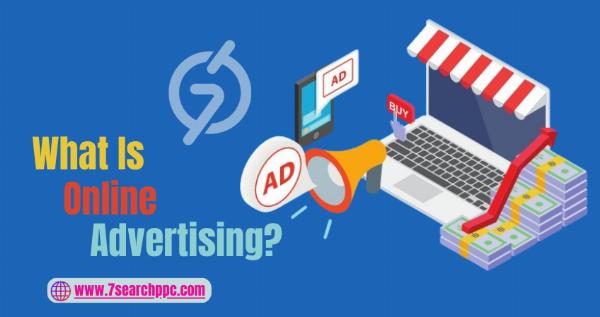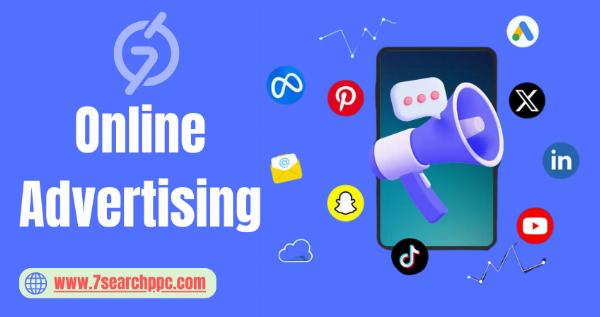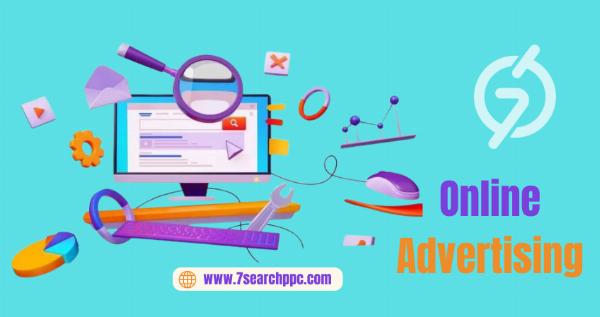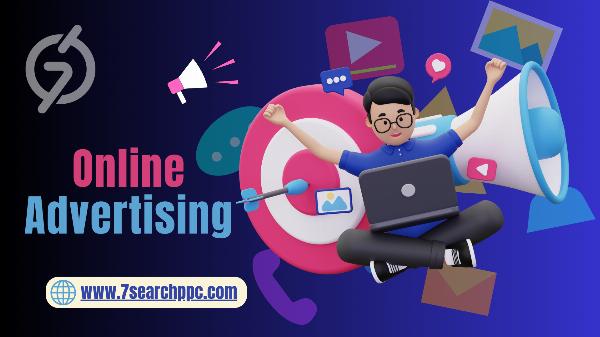 On-Page SEO Optimization – Fix Hidden Errors Killing Rankings!
On-Page SEO Optimization – Fix Hidden Errors Killing Rankings!
Online Advertising: Types, Tips & Tricks
Written by Mark Lee » Updated on: June 17th, 2025

In today's digital age, online advertising has become an indispensable tool for businesses aiming to reach a broader audience and drive sales. With billions of users active on the internet daily, the potential to connect with prospective customers has never been greater. However, navigating the landscape of online advertising can be complex, given the myriad of platforms, ad formats, and strategies available. This guide delves into the various types of online advertising, provides practical tips, and shares tricks to maximize your advertising efforts.
Types of Online Advertising
Search Engine Advertising (SEA)
Search Engine Advertising, or PPC advertising, involves placing ads on search engine results pages (SERPs). The most popular platform for SEA is Google Ads, followed by Bing Ads. Advertisers bid on keywords relevant to their products or services, and their ads appear when users search for those terms.
Advantages:
- Targeted Reach: Ads are shown to users actively searching for related products or services.
- Measurable Results: Detailed analytics help track ad performance and ROI.
Disadvantages:
- Cost: Competitive keywords can be expensive.
- Ad Blindness: Some users may ignore ads entirely.
Social Media Advertising
Social media platforms like Facebook, Instagram, Twitter, LinkedIn, and TikTok offer robust advertising options. These platforms allow businesses to target users based on demographics, interests, behaviors, and more.
Advantages:
- Precise Targeting: Advanced targeting options ensure ads reach the right audience.
- Engagement: Social media ads can foster direct interaction with potential customers.
Disadvantages:
- Ad Fatigue: Users may become overwhelmed by the sheer volume of ads.
- Privacy Concerns: Increasing scrutiny over data privacy can affect ad targeting.
Display Advertising
Display advertising involves placing banner ads, images, or videos on websites within a display network, such as Google's Display Network. These ads can appear on relevant websites, blogs, and forums.
Advantages:
- Visual Appeal: Rich media ads can be more engaging and eye-catching.
- Wide Reach: Ads can appear on a vast array of websites.
Disadvantages:
- Lower Click-Through Rates: Users often ignore banner ads, leading to lower CTR.
- Ad Blockers: Increasing use of ad-blocking software can reduce visibility.
Video Advertising
Video advertising includes ads that appear before, during, or after video content on platforms like YouTube, Facebook, and Instagram. These can be in-stream ads, discovery ads, or bumper ads.
Advantages:
- High Engagement: Video content is highly engaging and can convey messages effectively.
- Versatility: Various ad formats and lengths cater to different marketing goals.
Disadvantages:
- Production Costs: Creating high-quality video ads can be expensive.
- Viewer Aversion: Some users may skip ads, especially on platforms like YouTube.
Native Advertising
Native advertising is designed to blend seamlessly with the content of the platform on which it appears. Examples include sponsored articles, in-feed ads on social media, and promoted listings on e-commerce sites.
Advantages:
- Non-Intrusive: Native ads feel more like natural content, leading to higher engagement.
- Trust: Users may trust native ads more than traditional ads.
Disadvantages:
- Deceptive: If not clearly labeled, native ads can be perceived as misleading.
- Integration Costs: Creating and integrating native ads can be time-consuming and costly.
Affiliate Marketing
Affiliate marketing involves partnering with individuals or other businesses (affiliates) to promote products. Affiliates earn a commission for each sale or lead they generate.
Advantages:
- Performance-Based: Advertisers pay only for actual sales or leads.
- Expanded Reach: Leverage the audience of affiliates to reach new customers.
Disadvantages:
- Control: Limited control over how affiliates promote products.
- Commission Costs: Paying commissions can add up, especially with high-performing affiliates.
Tips for Successful Online Advertising
Define Clear Objectives
Before launching any online advertising campaign, it’s crucial to define clear objectives. Are you aiming to increase brand awareness, generate leads, or drive sales? Clear goals will guide your strategy and help measure success.
Know Your Audience
Understanding your target audience is fundamental. Use data and analytics to gain insights into their demographics, interests, and online behaviors. Tailoring your ads to your audience increases relevance and effectiveness.
Craft Compelling Ad Copy and Visuals
Your ad copy and visuals should be compelling and aligned with your brand. Use clear, concise, and persuasive language. High-quality images and videos can significantly enhance the appeal of your ads.
Utilize A/B Testing
A/B testing involves running multiple versions of an ad to see which performs better. Test different headlines, images, calls to action, and targeting options to optimize your ads for the best results.
Leverage Retargeting
Retargeting allows you to show ads to users who have previously interacted with your website or content. This strategy can help re-engage potential customers and increase conversion rates.
Monitor and Analyze Performance
Regularly monitor and analyze your ad performance. Use analytics tools to track key metrics such as click-through rates (CTR), conversion rates, and return on ad spend (ROAS). Adjust your campaigns based on these insights to improve effectiveness.
Optimize for Mobile
With an increasing number of users accessing the internet via mobile devices, ensure your ads are optimized for mobile viewing. Mobile-friendly ads can enhance user experience and improve engagement rates.
Set a Realistic Budget
Determine a realistic budget for your advertising campaigns. Consider the cost of ad placements, production, and potential returns. Allocate your budget wisely across different platforms and strategies.
Tricks to Maximize Online Advertising Efforts

Leverage Influencer Marketing
Collaborate with influencers to promote your products. Influencers have established trust with their followers, and their endorsements can significantly boost brand credibility and reach.
Use Lookalike Audiences
Most advertising platforms, like Facebook Ads, offer the option to create lookalike audiences. These audiences are similar to your existing customers, increasing the likelihood of reaching potential customers who are interested in your products.
Implement Dynamic Ads
Dynamic ads automatically personalize content based on user behavior. For example, if a user viewed a product on your website, they might see an ad for that specific product later. This personalization can drive higher engagement and conversions.
Focus on Quality Score
Platforms like Google Ads use a Quality Score to determine ad relevance and cost-per-click (CPC). Focus on improving your Quality Score by ensuring your ads are relevant, your landing pages are high-quality, and your CTR is high.
Stay Updated with Trends
The digital marketing landscape is constantly evolving. Stay updated with the latest trends, tools, and best practices. Attending webinars, reading industry blogs, and participating in forums can help you stay ahead of the curve.
Automate Where Possible
Utilize automation tools to streamline your advertising efforts. Automated bidding, scheduling, and reporting can save time and ensure your campaigns run efficiently.
Prioritize User Experience
Ensure that your ads lead to a positive user experience. Fast-loading, mobile-optimized, and easy-to-navigate landing pages can significantly enhance user satisfaction and improve conversion rates.
Use Geo-Targeting
Geo-targeting allows you to show ads to users in specific locations. This can be particularly useful for local businesses or campaigns targeting specific regions, ensuring your ads reach the most relevant audience.
Conclusion
Online advertising offers a plethora of opportunities for businesses to connect with their target audience and achieve their marketing goals. By understanding the various types of online advertising, implementing effective strategies, and continuously optimizing your efforts, you can maximize your advertising ROI and drive significant business growth. Stay adaptable, experiment with different approaches, and keep learning to stay ahead in the ever-evolving digital advertising landscape.
FAQs About Online Advertising
What is the difference between organic and paid online advertising?
Ans. Organic advertising refers to non-paid efforts to attract visitors to your website or social media profiles, such as search engine optimization (SEO) and content marketing. Paid online advertising, on the other hand, involves spending money to place ads on various platforms to reach a targeted audience quickly.
How much should I budget for online advertising?
Ans. The budget for online advertising varies depending on your business size, industry, goals, and the platforms you choose. Start with a small budget to test the waters and gradually increase it based on your campaign's performance. Tools like Google Ads' Keyword Planner and Facebook's Audience Insights can help you estimate costs.
How do I measure the success of my online advertising campaigns?
Ans. Key performance indicators (KPIs) like click-through rates (CTR), conversion rates, cost per click (CPC), return on ad spend (ROAS), and engagement metrics are essential for measuring the success of your campaigns. Use analytics tools provided by advertising platforms and third-party solutions to track these metrics and gain insights into your campaign's effectiveness.
What are the best platforms for online advertising?
Ans. The best platforms for online advertising depend on your target audience and goals. Google Ads is ideal for search engine advertising, while Facebook and Instagram are excellent for social media advertising. LinkedIn is suitable for B2B marketing, and YouTube is perfect for video advertising. Evaluate each platform's features and audience demographics to choose the best fit for your campaigns.
How can I improve my ad's click-through rate (CTR)?
Ans. To improve your ad's CTR, focus on creating compelling and relevant ad copy, using eye-catching visuals, and targeting the right audience. A/B testing different ad variations can help identify the most effective elements. Additionally, ensure your ads are placed in the right context and align with user intent.
Note: IndiBlogHub features both user-submitted and editorial content. We do not verify third-party contributions. Read our Disclaimer and Privacy Policyfor details.
Copyright © 2019-2025 IndiBlogHub.com. All rights reserved. Hosted on DigitalOcean for fast, reliable performance.












